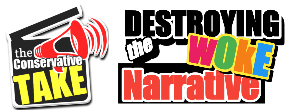[ad_1]

(Photo by Win McNamee/Getty Images)
President Joe Biden promised morning in America, lifting the nation’s spirit after a dreadful 12 months of the coronavirus pandemic. Be it unity or a pricey financial agenda, the brand new administration satisfied hundreds of thousands of voters there could be comfortable days once more within the United States. So far, the Build Back Better marketing campaign isn’t constructing again the general public’s optimism. As inflation intensifies and shortages worsen, Americans’ sentiment is declining to a stage unseen because the aftermath of the Great Recession. Despite the grandiose guarantees popping out of the White House, the American persons are not shopping for what U.S. officers are promoting.
Feeling Bearish
 The University of Michigan Consumer Sentiment Index fell to 66.8 in November, the worst stage since Nov. 2011. The studying fell in need of the market estimate of 72.4 and down from 71.7 in October. The plunge in sentiment was additionally felt in shoppers’ views of present financial situations, tumbling to 73.2. American shoppers is likely to be turning bitter on the post-pandemic restoration as they anticipate swelling inflation over the following one, three, and 5 years. The University of Michigan’s Inflation Expectations Index reached 4.9% in November, up from 4.8% in October.
The University of Michigan Consumer Sentiment Index fell to 66.8 in November, the worst stage since Nov. 2011. The studying fell in need of the market estimate of 72.4 and down from 71.7 in October. The plunge in sentiment was additionally felt in shoppers’ views of present financial situations, tumbling to 73.2. American shoppers is likely to be turning bitter on the post-pandemic restoration as they anticipate swelling inflation over the following one, three, and 5 years. The University of Michigan’s Inflation Expectations Index reached 4.9% in November, up from 4.8% in October.
The month-to-month survey additionally revealed 25% of shoppers had lowered their dwelling requirements due to hovering value inflation. The examine additional found half of all U.S. households consider their actual revenue will fall over the following 12 months when adjusted for inflation. This is sensible, contemplating that larger common hourly earnings haven’t stored up with inflation. Wages superior 4.9% year-over-year in October, however shopper value will increase have topped 6% throughout the identical interval.
Richard Curtin, the survey’s chief economist, mentioned in an announcement:
“Consumer sentiment fell in early November to its lowest level in a decade due to an escalating inflation rate and the growing belief among consumers that no effective policies have yet been developed to reduce the damage from surging inflation.
Rising prices for homes, vehicles, and durables were reported more frequently than any other time in more than half a century.”
It isn’t solely customers turning into bears on the U.S. financial system. The National Federation of Independent Business’ (NFIB) Business Optimism Index slipped to 98.2 in October, down from 99.1 in September.
What’s Good About This Economy Anyway?
The shopper value index (CPI) has surged on the quickest tempo in three a long time. The producer value index (PPI) has climbed to the best proportion in additional than a decade. The private consumption expenditure (PCE) value index, the Federal Reserve’s favourite inflation gauge, can be at a 30-year excessive.

But the 2 parts that is likely to be angering shoppers probably the most are the meals and power sticker shocks. Beef and veal are up 20.1%, pork is up 14.1%, hen is up 8.8%, espresso is up 4.7%, and fruit and veggies are up 3%. The power index spiked 30%, led by gasoline costs climbing 6.1% and pure fuel rising 6.6%. Even if these two unstable sectors are stripped from measurements, value inflation continues to be working above 4%.
At the identical time, hundreds of thousands of staff should both be fed up with their profession trajectories if they’re quitting their jobs en masse. The Department of Labor confirmed that 4.43 million folks stop, representing about 3% of the labor market. This comes as job openings surpassed most projections, totaling 10.438 million positions. At this level, it’s protected to say that economists have zero clue what is occurring within the post-COVID world.
Whatever the case, President Biden thinks it’s the public’s fault for skyrocketing costs, explaining at a current information convention that extra shoppers must be doing their procuring locally somewhat than on Amazon. “They’re staying home and ordering online and buying product. Well with more people with money buying product and less product to buy, what happens? The supply chain is the reason and the answer is you guys, and I’ll get to that in a minute. What happens? Prices go up.”

Joe Biden
(Photo by Drew Angerer/Getty Images)
At least he additionally conceded that his $2 trillion COVID-19 stimulus invoice from earlier this 12 months contributed to a surging CPI, telling reporters: “It changes people’s lives. But what happens if there’s nothing to buy and you got more money to compete for getting [goods]? It creates a real problem.”
A Collapsing Presidency
According to Real Clear Politics’ polling information common, the president is sustaining an approval score of about 42%. Clearly, Americans will not be endorsing Biden’s BBB pursuits as they’re perturbed about having much less cash of their pockets. He has but to finish his first 12 months within the Oval Office, so he might flip the sinking ship round by spending trillions of {dollars} with cash Washington doesn’t have in its possession. Hello, pink ink and printing press! Still, the chance of immense development is as little as Vice President Kamala Harris’ approval score. Not even the monetary markets will maintain their monster rally, with the Federal Reserve trimming its asset-buying program and doubtlessly elevating rates of interest forward of schedule (June 2022, anybody?). The real-time experiment in Bidenomics goes up in flames. That’s no joke. Come on, man.
~ Read extra from Andrew Moran.
[ad_2]
Source hyperlink














